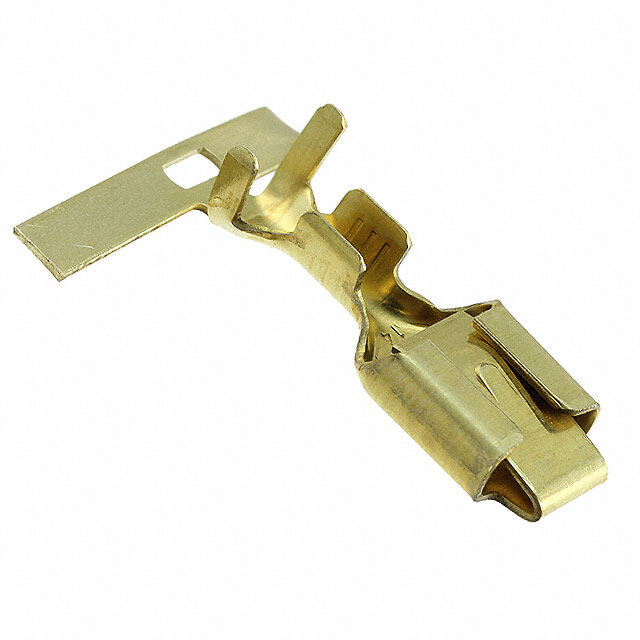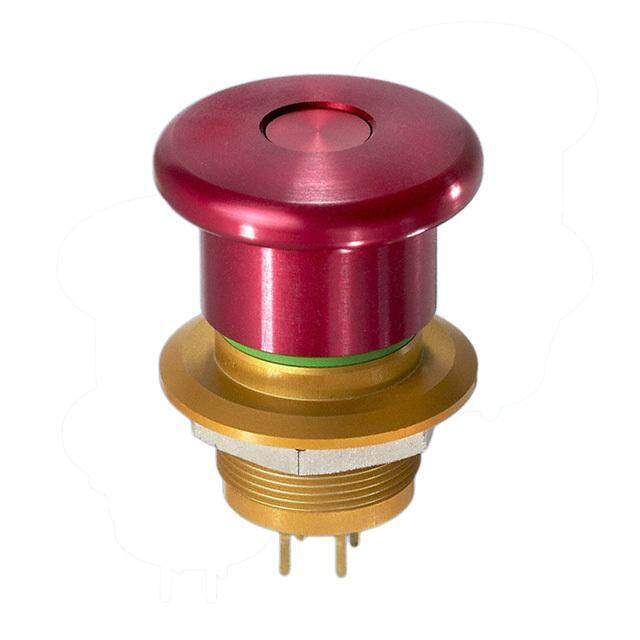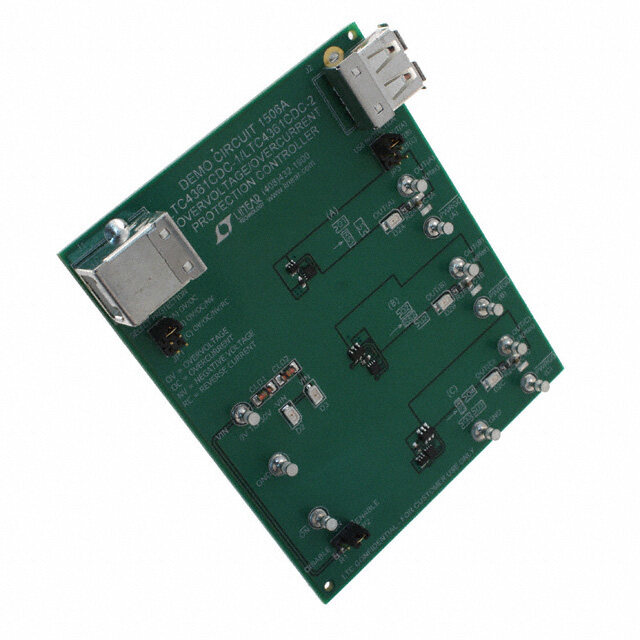ICGOO在线商城 > BD733L2FP-CE2
- 型号: BD733L2FP-CE2
- 制造商: ROHM Semiconductor
- 库位|库存: xxxx|xxxx
- 要求:
| 数量阶梯 | 香港交货 | 国内含税 |
| +xxxx | $xxxx | ¥xxxx |
查看当月历史价格
查看今年历史价格
BD733L2FP-CE2产品简介:
ICGOO电子元器件商城为您提供BD733L2FP-CE2由ROHM Semiconductor设计生产,在icgoo商城现货销售,并且可以通过原厂、代理商等渠道进行代购。 提供BD733L2FP-CE2价格参考¥6.35-¥12.92以及ROHM SemiconductorBD733L2FP-CE2封装/规格参数等产品信息。 你可以下载BD733L2FP-CE2参考资料、Datasheet数据手册功能说明书, 资料中有BD733L2FP-CE2详细功能的应用电路图电压和使用方法及教程。
| 参数 | 数值 |
| 产品目录 | 集成电路 (IC) |
| 描述 | IC REG LDO 3.3V 0.2A TO252-3 |
| 产品分类 | |
| 品牌 | Rohm Semiconductor |
| 数据手册 | |
| 产品图片 | |
| 产品型号 | BD733L2FP-CE2 |
| rohs | 无铅 / 符合限制有害物质指令(RoHS)规范要求 |
| 产品系列 | - |
| 供应商器件封装 | TO-252-3 |
| 其它名称 | BD733L2FP-CE2TR |
| 包装 | 带卷 (TR) |
| 安装类型 | 表面贴装 |
| 封装/外壳 | TO-252-3,DPak(2 引线+接片),SC-63 |
| 工作温度 | -40°C ~ 125°C |
| 标准包装 | 2,000 |
| 电压-跌落(典型值) | 0.6V @ 200mA |
| 电压-输入 | 4.37 V ~ 45 V |
| 电压-输出 | 3.3V |
| 电流-输出 | 200mA |
| 电流-限制(最小值) | - |
| 稳压器拓扑 | 正,固定式 |
| 稳压器数 | 1 |

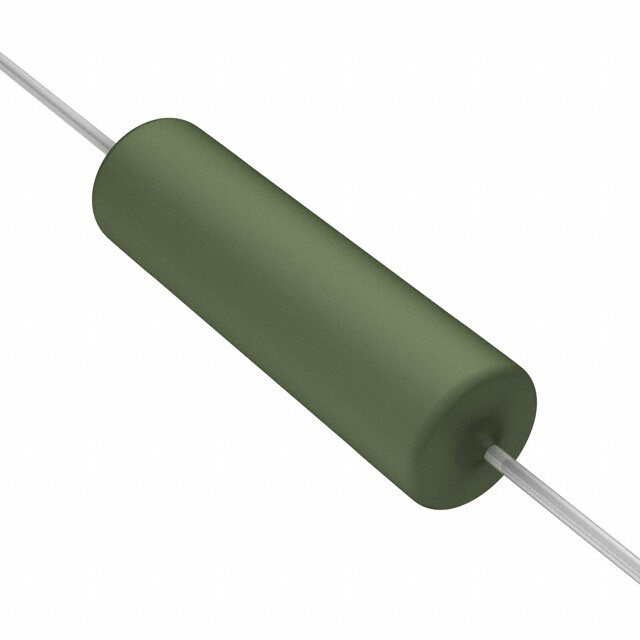
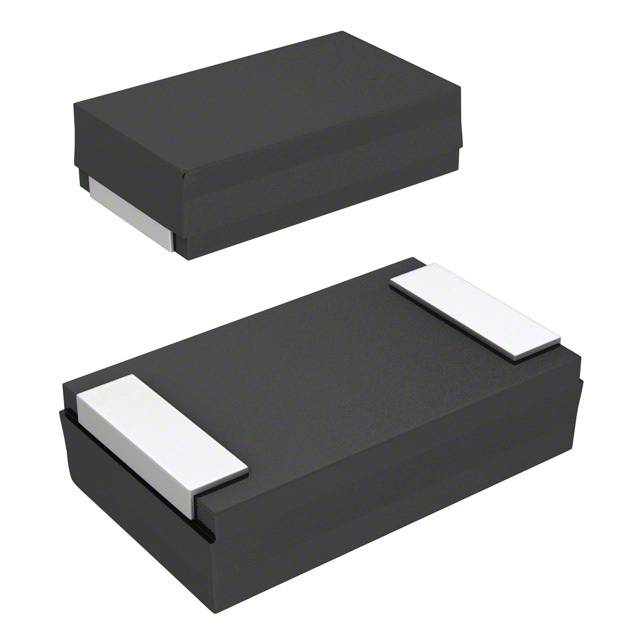
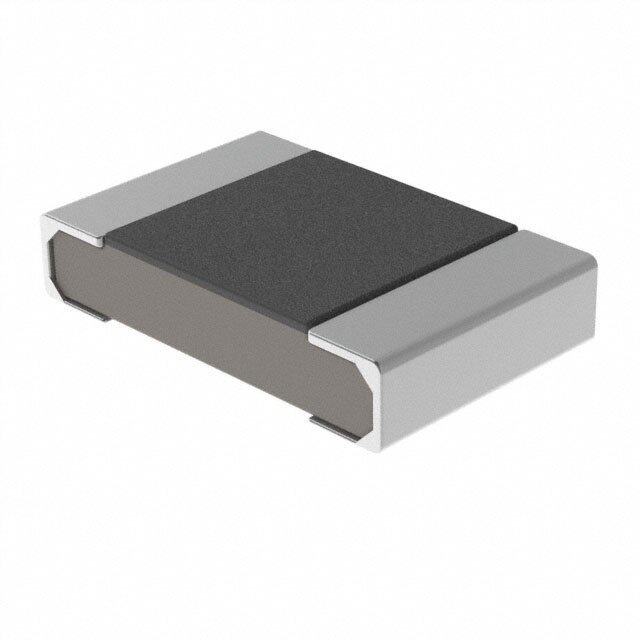


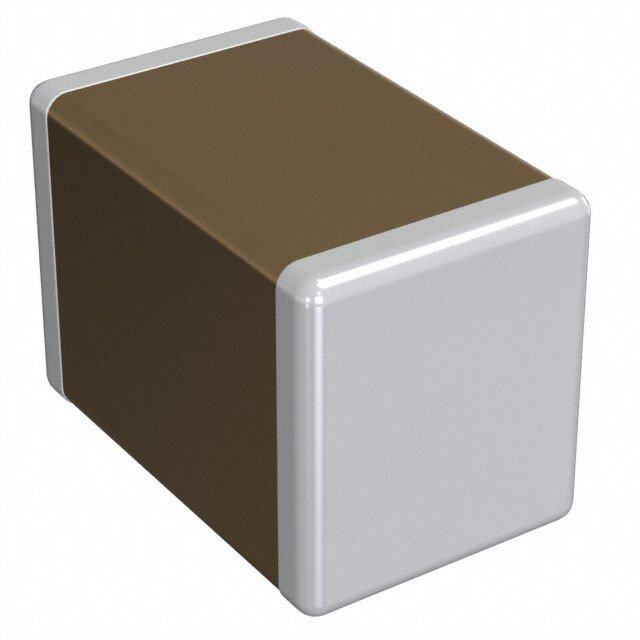
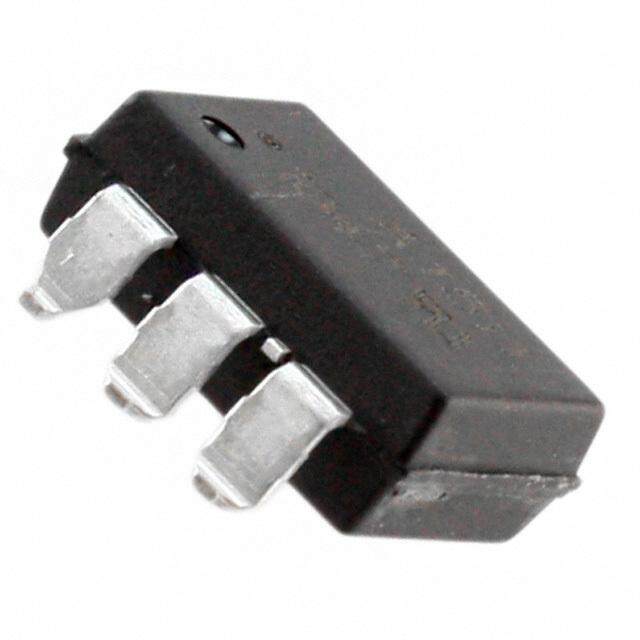

- 商务部:美国ITC正式对集成电路等产品启动337调查
- 曝三星4nm工艺存在良率问题 高通将骁龙8 Gen1或转产台积电
- 太阳诱电将投资9.5亿元在常州建新厂生产MLCC 预计2023年完工
- 英特尔发布欧洲新工厂建设计划 深化IDM 2.0 战略
- 台积电先进制程称霸业界 有大客户加持明年业绩稳了
- 达到5530亿美元!SIA预计今年全球半导体销售额将创下新高
- 英特尔拟将自动驾驶子公司Mobileye上市 估值或超500亿美元
- 三星加码芯片和SET,合并消费电子和移动部门,撤换高东真等 CEO
- 三星电子宣布重大人事变动 还合并消费电子和移动部门
- 海关总署:前11个月进口集成电路产品价值2.52万亿元 增长14.8%
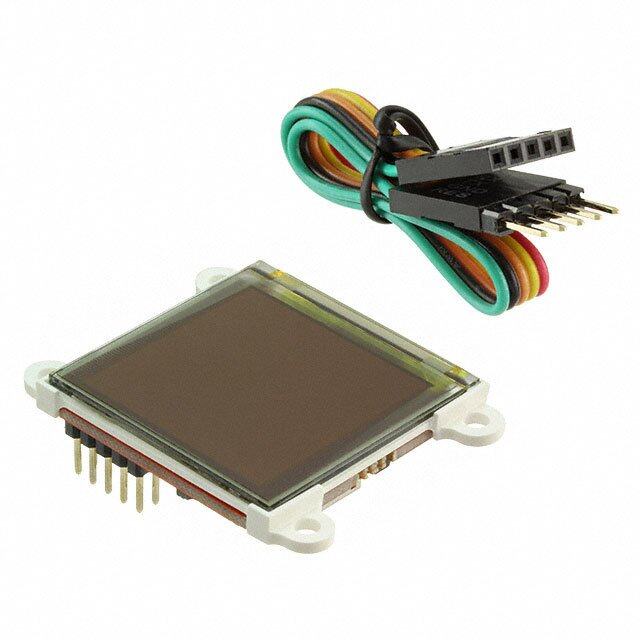
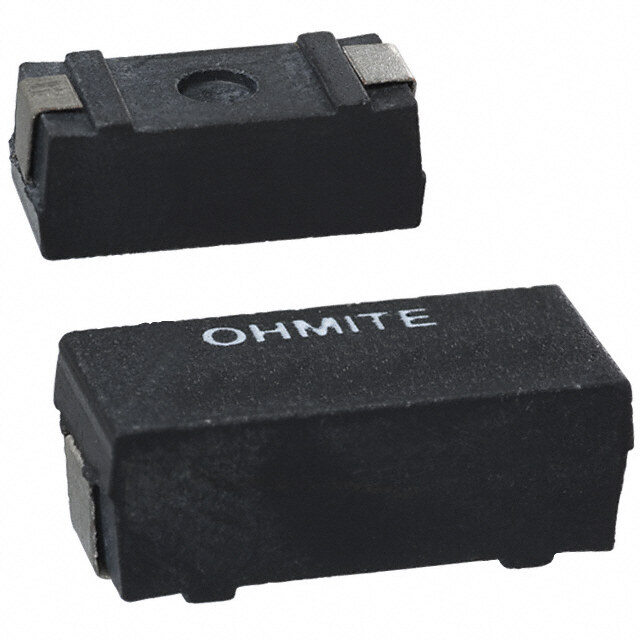
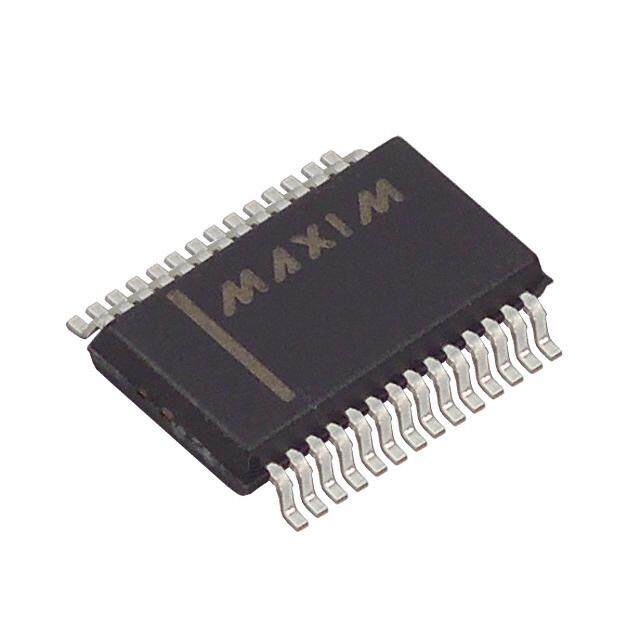
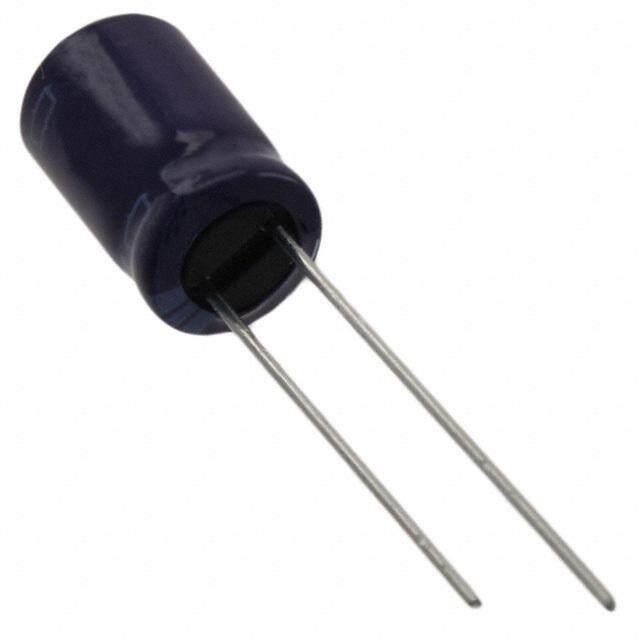
PDF Datasheet 数据手册内容提取
Datasheet Single-Output LDO Regulators Ultra Low Quiescent Current LDO Regulator BD7xxL2EFJ/FP/FP3-C ●General Description ●Key specification The BD7xxL2EFJ/FP/FP3-C are low quiescent Ultra low quiescent current: 6μA (Typ) regulators featuring 50V absolute maximum voltage, Output voltage: 3.3 V or 5.0 V (Typ) and output voltage accuracy of ±2%, 200mA output Output current capability: 200mA current and 6μA (Typ) current consumption. These High output voltage accuracy: ±2% regulators are therefore ideal for applications Low ESR ceramic capacitor requiring a direct connection to the battery and a can be used as output capacitor low current consumption. Ceramic capacitors can AEC-Q100 Qualified(*2) be used for compensation of the output capacitor (*2:Grade1) phase. Furthermore, these ICs also feature overcurrent protection to protect the device from ●Packages W (Typ) x D (Typ) x H (Max) damage caused by short-circuiting and an EFJ: HTSOP-J8 4.90mm x 6.00mm x 1.00mm integrated thermal shutdown to protect the device from overheating at overload conditions. ●Features Ultra low quiescent current: 6μA (Typ) FP: TO252-3 6.50mm x 9.50mm x 2.50mm Output current capability: 200mA Output voltage: 3.3 V or 5.0 V(Typ) High output voltage accuracy: ±2% Low saturation voltage by using PMOS output transistor. Integrated overcurrent protection to protect the IC from damage caused by output FP3:SOT223-4(F) 6.53mm x 7.00mm x 1.80mm short-circuiting. Integrated thermal shutdown to protect the IC from overheating at overload conditions. Low ESR ceramic capacitor can be used as output capacitor. HTSOP-J8, TO252-3, SOT223-4(F) (*1) 3type package Figure 1. Package Outlook (*1:SOT223-4、SOT223-4F) ●Applications Automotive (body, audio system, navigation system, etc.) ●Typical Application Circuits Components externally connected: 0.1 µF ≤ CIN, 4.7 µF ≤ COUT (Min) *Electrolytic, tantalum and ceramic capacitors can be used. FIN FIN 8:VCC 7:N.C. 6:N.C. 5:GND BD7xxL2FP-C BD7xxL2FP3-C BD7xxL2EFJ-C CIN 1:VCC 2:N.C. 3:VOUT 1:VCC 2:GND 3:VOUT 1:VOUT2:N.C. 3:N.C. 4:N.C. COUT CIN COUT CIN COUT HTSOP-J8 TO252-3 SOT223-4(F) Figure 2. Typical Application Circuits ○Product structure:Silicon monolithic integrated circuit ○This product is not designed protection against radioactive rays .w ww.rohm.com TSZ02201-0G1G0AN00010-1-2 © 2013 ROHM Co., Ltd. All rights reserved. 1/30 TSZ22111・14・001 17.FEB.2017 Rev.007
BD7xxL2EFJ/FP/FP3-C ●Ordering Information B D 7 x x L 2 E F J - C E 2 Ou tput Volt age P acka ge Pro duct Ra nk P ack agin g and Form ing 33: 3.3V EFJ: HTSOP-J8 C: for Automotive Specification 50: 5.0V FP: TO252-3 E2: Embossed Tape and Reel FP3: SOT223-4(F) ●Lineup Output current Output voltage Package type Orderable Part Number ability (Typ) HTSOP-J8 BD733L2EFJ-CE2 3.3 V TO252-3 BD733L2FP-CE2 SOT223-4(F) BD733L2FP3-CE2 200 mA HTSOP-J8 BD750L2EFJ-CE2 5.0 V TO252-3 BD750L2FP-CE2 SOT223-4(F) BD750L2FP3-CE2 .w ww.rohm.com TSZ02201-0G1G0AN00010-1-2 © 2013 ROHM Co., Ltd. All rights reserved. 2/30 TSZ22111・15・001 17.FEB.2017 Rev.007
BD7xxL2EFJ/FP/FP3-C ●Pin Configuration HTSOP-J8 TO252-3 SOT223-4(F) (TOP VIEW) (TOP VIEW) (TOP VIEW) 8 7 6 5 FIN 1 2 3 4 1 2 3 1 2 3 Figure 3. Pin Configuration ●Pin Description ■HTSOP-J8 ■TO252-3, SOT223-4(F) Pin No. Pin Name Function Pin No. Pin Name Function 1 VOUT Output pin 1 VCC Supply voltage input pin TO252-3: N.C. 2 N.C. Not connected 2 N.C./GND SOT223-4(F): GND 3 N.C. Not connected 3 VOUT Output pin 4 N.C. Not connected FIN GND GND 5 GND GND (※N.C. terminals are not need to connect to GND.) 6 N.C. Not connected 7 N.C. Not connected 8 VCC Supply voltage input pin (※N.C. terminals are not need to connect to GND. (※Exposed die pad is need to be connected to GND in the inside of IC.) (※Exposed die pad is connected to GND in the inside of IC.) .w ww.rohm.com TSZ02201-0G1G0AN00010-1-2 © 2013 ROHM Co., Ltd. All rights reserved. 3/30 TSZ22111・15・001 17.FEB.2017 Rev.007
BD7xxL2EFJ/FP/FP3-C ●Block Diagram ■HTSOP-J8 VCC(8PIN) N.C.(7PIN) N.C.(6PIN) GND(5PIN) PREREG VREF DRIVER OCP TSD VOUT(1PIN) N.C.(2PIN) N.C.(3PIN) N.C.(4PIN) ■TO252-3, SOT223-4(F) GND(FIN) PREREG VREF DRIVER OCP TSD VCC(1PIN) TO252-3 :N.C. (2PIN) VOUT(3PIN) SOT223-4(F) :GND(2PIN) Figure 4. Block Diagram .w ww.rohm.com TSZ02201-0G1G0AN00010-1-2 © 2013 ROHM Co., Ltd. All rights reserved. 4/30 TSZ22111・15・001 17.FEB.2017 Rev.007
BD7xxL2EFJ/FP/FP3-C ●Absolute Maximum Ratings(Ta=25°C) Parameter Symbol Ratings Unit Supply Voltage *1 VCC -0.3 to +50.0 V Operating Temperature Range Topr -40 to +125 °C Storage Temperature Range Tstg -55 to +150 °C Maximum Junction Temperature Tjmax 150 °C *1 Pd should not be exceeded. ●Operating Conditions(-40 < Ta < +125°C) ■BD733L2EFJ/FP/FP3-C Parameter Symbol Min Max Unit Supply Voltage *2 VCC 4.37 45.0 V Startup Voltage *3 VCC 3.0 - V Output Current IOUT 0 200 mA ■BD750L2EFJ/FP/FP3-C Parameter Symbol Min Max Unit Supply Voltage *2 VCC 5.8 45.0 V Startup Voltage *3 VCC 3.0 - V Output Current IOUT 0 200 mA *2 For output voltage, refer to the dropout voltage corresponding to the output current. *3 When IOUT=0mA. .w ww.rohm.com TSZ02201-0G1G0AN00010-1-2 © 2013 ROHM Co., Ltd. All rights reserved. 5/30 TSZ22111・15・001 17.FEB.2017 Rev.007
BD7xxL2EFJ/FP/FP3-C ●Thermal Resistance(*1) Thermal Resistance (Typ) Parameter Symbol Unit 1s(*3) 2s2p(*4) HTSOP-J8 Junction to Ambient θJA 130 34 °C/W Junction to Top Characterization Parameter(*2) ΨJT 15 7 °C/W TO252-3 Junction to Ambient θJA 136 23 °C/W Junction to Top Characterization Parameter(*2) ΨJT 17 3 °C/W SOT223-4(F) Junction to Ambient θJA 164 71 °C/W Junction to Top Characterization Parameter(*2) ΨJT 20 14 °C/W (*1)Based on JESD51-2A(Still-Air). (*2)The thermal characterization parameter to report the difference between junction temperature and the temperature at the top center of the outside surface of the component package. (*3)Using a PCB board based on JESD51-3. Layer Number of Material Board Size Measurement Board Single FR-4 114.3mm x 76.2mm x 1.57mmt Top Copper Pattern Thickness Footprints and Traces 70μm (*4)Using a PCB board based on JESD51-5, 7. Layer Number of Thermal Via(*5) Material Board Size Measurement Board Pitch Diameter 4 Layers FR-4 114.3mm x 76.2mm x 1.6mmt 1.20mm Φ0.30mm Top 2 Internal Layers Bottom Copper Pattern Thickness Copper Pattern Thickness Copper Pattern Thickness Footprints and Traces 70μm 74.2mm x 74.2mm 35μm 74.2mm x 74.2mm 70μm (*5) This thermal via connects with the copper pattern of all layers. .w ww.rohm.com TSZ02201-0G1G0AN00010-1-2 © 2013 ROHM Co., Ltd. All rights reserved. 6/30 TSZ22111・15・001 17.FEB.2017 Rev.007
BD7xxL2EFJ/FP/FP3-C ●Electrical Characteristics (BD733L2EFJ/FP/FP3-C) (Unless otherwise specified, -40 < Ta < +125°C, VCC=13.5V, IOUT=0mA, Reference value: Ta=25°C) Limit Parameter Symbol Unit Conditions Min Typ Max Bias current Ib - 6 15 μA 8V < VCC < 16V Output voltage VOUT 3.23 3.30 3.37 V 0mA < IOUT < 100mA Dropout voltage ΔVd - 0.6 1.0 V VCC=VOUT×0.95, IOUT=200mA f=120Hz, ein=1Vrms, Ripple rejection R.R. 50 63 - dB IOUT=100mA Line regulation Reg I - 5 20 mV 8V < VCC < 16V Load regulation Reg L - 5 20 mV 10mA < IOUT < 200mA ●Electrical Characteristics (BD750L2EFJ/FP/FP3-C) (Unless otherwise specified, -40 < Ta < +125°C, VCC=13.5V, IOUT=0mA, Reference value: Ta=25°C) Limit Parameter Symbol Unit Conditions Min Typ Max Bias current Ib - 6 15 μA 8V < VCC < 16V Output voltage VOUT 4.9 5.0 5.1 V 0mA < IOUT < 100mA Dropout voltage ΔVd - 0.4 0.7 V VCC=VOUT×0.95, IOUT=200mA f=120Hz, ein=1Vrms, Ripple rejection R.R. 50 60 - dB IOUT=100mA Line regulation Reg I - 5 20 mV 8V < VCC < 16V Load regulation Reg L - 5 20 mV 10mA < IOUT < 200mA .w ww.rohm.com TSZ02201-0G1G0AN00010-1-2 © 2013 ROHM Co., Ltd. All rights reserved. 7/30 TSZ22111・15・001 17.FEB.2017 Rev.007
BD7xxL2EFJ/FP/FP3-C ●Typical Performance Curves ■BD733L2EFJ/FP/FP3-C Reference data Unless otherwise specified: -40 < Ta < +125°C, VCC=13.5V, IOUT=0mA 100 6 90 -40°C -40°C 25°C 5 25°C 80 125°C 125°C μA] 70 T[V] NT : lb[ 60 E : VOU 4 E 50 G 3 R A R T U 40 L C O AS 30 T V 2 BI U P 20 T U 1 O 10 0 0 0 10 20 30 40 50 0 10 20 30 40 50 SUPPLY VOLTAGE : VCC[V] SUPPLY VOLTAGE : VCC[V] Figure 5. Bias current Figure 6. Output voltage vs. Supply voltage IOUT=10mA 6 6 -40°C -40°C 5 25°C 5 25°C T[V] 125°C T[V] 125°C U U O O V 4 V 4 E : E : G G TA 3 TA 3 OL OL V V T T PU 2 PU 2 T T U U O O 1 1 0 0 0 10 20 30 40 50 0 200 400 600 800 1000 SUPPLY VOLTAGE : VCC[V] OUTPUT CURRENT : IOUT[mA] Figure 7. Output voltage vs. Supply voltage Figure 8. Output voltage vs. Load IOUT=100mA .w ww.rohm.com TSZ02201-0G1G0AN00010-1-2 © 2013 ROHM Co., Ltd. All rights reserved. 8/30 TSZ22111・15・001 17.FEB.2017 Rev.007
BD7xxL2EFJ/FP/FP3-C ●Typical Performance Curves – continued ■BD733L2EFJ/FP/FP3-C Reference data Unless otherwise specified: -40 < Ta < +125°C, VCC=13.5V, IOUT=0mA 1.2 90 -40°C 80 -40°C 25°C 25°C 125°C B] 70 125°C d[V] 0.8 R.R.[d 60 V △ N : 50 UT : TIO O C 40 P E O EJ R 0.4 R 30 D E PL 20 P RI 10 0.0 0 0 40 80 120 160 200 10 100 1000 10000 100000 OUTPUT CURRENT : IOUT[mA] FREQUENCY : f[Hz] Figure 9. Dropout voltage Figure 10. Ripple rejection (ein=1Vrms,IOUT=100mA) 20 6 18 -40°C 5 16 25°C V] A] 125°C UT[ μ 14 O b[ V 4 T : l 12 E : N G RE 10 TA 3 R OL U 8 V S C UT 2 A 6 P BI T U 4 O 1 2 0 0 0 40 80 120 160 200 100 120 140 160 180 200 OUTPUT CURRENT : IOUT[mA] AMBIENT TEMPERATURE : Ta[℃] Figure 11. Total supply current vs. Load Figure 12. Thermal shutdown (Output voltage vs. Temperature) .w ww.rohm.com TSZ02201-0G1G0AN00010-1-2 © 2013 ROHM Co., Ltd. All rights reserved. 9/30 TSZ22111・15・001 17.FEB.2017 Rev.007
BD7xxL2EFJ/FP/FP3-C ●Typical Performance Curves – continued ■BD733L2EFJ/FP/FP3-C Reference data Unless otherwise specified: -40 < Ta < +125°C, VCC=13.5V, IOUT=0mA 10 3.354 9 V] [ 3.334 UT μA] E : VO 3.314 NT : lb[ 8 AG RE 7 T L 3.294 R O U V C T S 6 U 3.274 A TP BI U O 5 3.254 3.234 4 -40 0 40 80 120 -40 0 40 80 120 AMBIENT TEMPERATURE : Ta[℃] AMBIENT TEMPERATURE : Ta[℃] Figure 13. Output voltage vs. Temperature Figure 14. Bias current vs. Temperature .w ww.rohm.com TSZ02201-0G1G0AN00010-1-2 © 2013 ROHM Co., Ltd. All rights reserved. 10/30 TSZ22111・15・001 17.FEB.2017 Rev.007
BD7xxL2EFJ/FP/FP3-C ●Typical Performance Curves – continued ■BD750L2EFJ/FP/FP3-C Reference data Unless otherwise specified: -40 < Ta < +125°C, VCC=13.5V, IOUT=0mA 100 8 90 -40°C 7 -40°C 25°C 25°C 80 125°C V] . 125°C A] . 70 UT[ 6 T : lb[μ 60 GE : VO 5 EN 50 TA 4 R L R O U 40 V 3 C T S U A 30 P BI UT 2 20 O 1 10 0 0 0 10 20 30 40 50 0 10 20 30 40 50 SUPPLY VOLTAGE : VCC[V] SUPPLY VOLTAGE : VCC[V] Figure 15. Bias current Figure 16. Output voltage vs. Supply voltage 8 8 7 -40°C 7 -40°C UT[V] 6 21525°C°C UT[V] . 6 21525°C°C E : VO 5 E : VO 5 G G A 4 A 4 T T L L O O V 3 V 3 T T U U P P T 2 T 2 U U O O 1 1 0 0 0 10 20 30 40 50 0 200 400 600 800 1000 SUPPLY VOLTAGE : VCC[V] OUTPUT CURRENT : IOUT[mA] Figure 17. Output voltage vs. Supply voltage Figure 18. Output voltage vs. Load IOUT=100mA .w ww.rohm.com TSZ02201-0G1G0AN00010-1-2 © 2013 ROHM Co., Ltd. All rights reserved. 11/30 TSZ22111・15・001 17.FEB.2017 Rev.007
BD7xxL2EFJ/FP/FP3-C ●Typical Performance Curves – continued ■BD750L2EFJ/FP/FP3-C Reference data Unless otherwise specified: -40 < Ta < +125°C, VCC=13.5V, IOUT=0mA 1.2 90 -40°C 80 -40°C △Vd[V] 21525°C°C R.[dB] 70 21525°C°C GE : 0.8 N : R. 60 A O 50 LT TI O C V E 40 T EJ U R O 0.4 E 30 OP PL DR RIP 20 10 0.0 0 0 40 80 120 160 200 10 100 1000 10000 100000 OUTPUT CURRENT : IOUT[mA] FREQUENCY : f[Hz] Figure 19. Dropout voltage Figure 20. Ripple rejection (ein=1Vrms,IOUT=100mA) 20 6 18 -40°C 25°C 5 16 V] A] . 14 125°C OUT[ T : lb[μ 12 GE : V 4 N A E 10 T 3 R L R O U 8 V C T S 6 PU 2 A T BI U 4 O 1 2 0 0 0 40 80 120 160 200 100 120 140 160 180 200 OUTPUT CURRENT : IOUT[mA] AMBIENT TEMPERATURE : Ta[℃] Figure 21. Total supply current vs. Load Figure 22. Thermal shutdown (Output voltage vs. Temperature) .w ww.rohm.com TSZ02201-0G1G0AN00010-1-2 © 2013 ROHM Co., Ltd. All rights reserved. 12/30 TSZ22111・15・001 17.FEB.2017 Rev.007
BD7xxL2EFJ/FP/FP3-C ●Typical Performance Curves – continued ■BD750L2EFJ/FP/FP3-C Reference data Unless otherwise specified: -40 < Ta < +125°C, VCC=13.5V, IOUT=0mA 5.100 10 5.080 9 V] 5.060 UT[ A] O 5.040 μ V b[ 8 E : 5.020 T : l G N A E T 5.000 R 7 L R O U V 4.980 C UT S 6 TP 4.960 BIA U O 4.940 5 4.920 4.900 4 -40 0 40 80 120 -40 0 40 80 120 AMBIENT TEMPERATURE : Ta[℃] AMBIENT TEMPERATURE : Ta[℃] Figure 23. Output voltage vs. Temperature Figure 24. Bias current vs. Temperature .w ww.rohm.com TSZ02201-0G1G0AN00010-1-2 © 2013 ROHM Co., Ltd. All rights reserved. 13/30 TSZ22111・15・001 17.FEB.2017 Rev.007
BD7xxL2EFJ/FP/FP3-C ●Measurement Circuit (BD7xxL2EFJ-C Series) HTSOP-J8 8:VCC7:N.C. 6:N.C. 5:GND 8:VCC7:N.C. 6:N.C. 5:GND 8:VCC7:N.C. 6:N.C.5:GND 1µF BD7xxL2EFJ-C 1µF BD7xxL2EFJ-C 1µF BD7xxL2EFJ-C 1:VOUT2:N.C. 3:N.C. 4:N.C. 1:VOUT2:N.C. 3:N.C.4:N.C. 1:VOUT2:N.C. 3:N.C.4:N.C. 4.7µF 4.7µF IOUT 4.7µF Measurement setup for Measurement setup for Figure 8, 18 Measurement setup for Figure 5, 14, 15, 24 Figure 6, 7, 12, 13, 16, 17, 22, 23 8:VCC7:N.C. 6:N.C.5:GND 8:VCC7:N.C. 6:N.C. 5:GND 8:VCC7:N.C. 6:N.C.5:GND 1Vrms 1µF BD7xxL2EFJ-C 1µF BD7xxL2EFJ-C 1µF BD7xxL2EFJ-C 1:VOUT2:N.C. 3:N.C. 4:N.C. 1:VOUT2:N.C. 3:N.C. 4:N.C. 1:VOUT2:N.C. 3:N.C. 4:N.C. 4.7µF 4.7µF 4.7µF IOUT IOUT IOUT Me asurement setup for Figure 9, 19 Measurement setup for Figure 10, 20 Measurement setup for Figure 11, 21 ●Measurement Circuit (BD7xxL2FP-C Series) TO252-3 FIN FIN FIN BD7xxL2FP-C BD7xxL2FP-C BD7xxL2FP-C 1:VCC 2:N.C. 3:VOUT 1:VCC 2:N.C. 3:VOUT 1:VCC 2:N.C. 3:VOUT 1µF 4.7µF 1µF 4.7µF IOUT 1µF 4.7µF Meas urement setup for Figure 5, 14, 15, 24 Measurement setup for Measurement setup for Figure 8, 18 Figure 6, 7, 12, 13, 16, 17, 22, 23 FIN FIN FIN BD7xxL2FP-C BD7xxL2FP-C BD7xxL2FP-C 1:VCC 2:N.C. 3:VOUT 1:VCC 2:N.C. 3:VOUT 1:VCC 2:N.C. 3:VOUT 1Vrms 1µF 4.7µF IOUT 1µF 4.7µF M 1µF 4.7µF IOUT IOUT Measurement setup for Figure 9, 19 Measurement setup for Figure 10, 20 Measurement setup for Figure 11, 21 .w ww.rohm.com TSZ02201-0G1G0AN00010-1-2 © 2013 ROHM Co., Ltd. All rights reserved. 14/30 TSZ22111・15・001 17.FEB.2017 Rev.007
BD7xxL2EFJ/FP/FP3-C ●Measurement Circuit (BD7xxL2FP3-C Series) SOT223-4(F) FIN FIN FIN BD7xxL2FP3-C BD7xxL2FP3-C BD7xxL2FP3-C 1:VCC 2:GND 3:VOUT 1:VCC 2:GND 3:VOUT 1:VCC 2:GND 3:VOUT 1uF 4.7uF 1uF 4.7uF 1uF 4.7uF Me asurement setup for Figure 5, 14, 15, 24 Measurement setup for Measurement setup for Figure 8, 18 Figure 6, 7, 12, 13, 16, 17, 22, 23 FIN FIN FIN BD7xxL2FP3-C BD7xxL2FP3-C BD7xxL2FP3-C 1:VCC 2:GND 3:VOUT 1:VCC 2:GND 3:VOUT 1:VCC 2:GND 3:VOUT 1Vrms 1uF 4.7uF IOUT 1uF 4.7uF IOUTM 1uF 4.7uF IOUT Measurement setup for Figure 9, 19 Measurement setup for Figure 10, 20 Measurement setup for Figure 11, 21 .w ww.rohm.com TSZ02201-0G1G0AN00010-1-2 © 2013 ROHM Co., Ltd. All rights reserved. 15/30 TSZ22111・15・001 17.FEB.2017 Rev.007
BD7xxL2EFJ/FP/FP3-C ●Selection of Components Externally Connected ・VCC pin Insert capacitors with a capacitance of 0.1μF or higher between the VCC and GND pin. Choose the capacitance according to the line between the power smoothing circuit and the VCC pin. Selection of the capacitance also depends on the application. Verify the application and allow for sufficient margins in the design. We recommend using a capacitor with excellent voltage and temperature characteristics. ・Output pin capacitor In order to prevent oscillation, a capacitor needs to be placed between the output pin and GND pin. We recommend using a capacitor with a capacitance of 4.7μF or higher. Electrolytic, tantalum and ceramic capacitors can be used. When selecting the capacitor ensure that the capacitance of 4.7μF or higher is maintained at the intended applied voltage and temperature range. Due to changes in temperature the capacitor’s capacitance can fluctuate possibly resulting in oscillation. For selection of the capacitor refer to the IOUT vs. ESR data. The stable operation range given in the reference data is based on the standalone IC and resistive load. For actual applications the stable operating range is influenced by the PCB impedance, input supply impedance and load impedance. Therefore verification of the final operating environment is needed. When selecting a ceramic type capacitor, we recommend using X5R, X7R or better with excellent temperature and DC-biasing characteristics and high voltage tolerance. Also, in case of rapidly changing input voltage and load current, select the capacitance in accordance with verifying that the actual application meets with the required specification. ●Measurement setup FIN FIN 8:VCC 7:N.C. 6:N.C. 5:GND BD7xxL2FP-C BD7xxL2FP3-C CIN BD7xxL2EFJ-C 1:VCC 2:GND 3:VOUT 1:VCC 2:N.C. 3:VOUT 1:VOUT 2:N.C. 3:N.C. 4:N.C. CESORUT IOUT CIN CEOSURT IOUT CIN CEOSURT IOUT HTSOP-J8 TO252-3 SOT223-4(F) ○Condition ○Condition VCC=13.5V VCC=13.5V CIN=0.1μF CIN=0.1µF 4.7µF < COUT < 100µF 4.7µF < COUT < 100µF Ta=-40 < Ta < +125℃ Ta=-40 < Ta < +125℃ .w ww.rohm.com TSZ02201-0G1G0AN00010-1-2 © 2013 ROHM Co., Ltd. All rights reserved. 16/30 TSZ22111・15・001 17.FEB.2017 Rev.007
BD7xxL2EFJ/FP/FP3-C ●Power Dissipation ■HTSOP-J8 5.0 IC mounted on ROHM standard board based on JEDEC. ① : 1 - layer PCB (Copper foil area on the reverse side of PCB: 0 mm x 0 mm) 4.0 ②3.67 W Board material: FR4 W] Board size: 114.3 mm x 76.2 mm x 1.57 mmt d[ Mount condition: PCB and exposed pad are soldered. P 3.0 n: Top copper foil: ROHM recommended o footprint + wiring to measure, 2 oz. copper. ati p si 2.0 ② : 4 - layer PCB s Di (2 inner layers and Copper foil area on the reverse side of PCB: er ①0.96 W 74.2 mm x 74.2 mm) ow 1.0 Board material: FR4 P Board size: 114.3 mm x 76.2 mm x 1.60 mmt Mount condition: PCB and exposed pad are soldered. Top copper foil: ROHM recommended 0.0 footprint + wiring to measure, 2 oz. copper. 0 25 50 75 100 125 150 2 inner layers copper foil area of PCB Ambient Temperature: Ta [ C] : 74.2 mm x 74.2 mm, 1 oz. copper. Copper foil area on the reverse side of PCB : 74.2 mm x 74.2 mm, 2 oz. copper. Figure 25. HTSOP-J8 Package Data Condition①: θJA = 130 C / W, ΨJT (top center) = 15 °C / W Condition②: θJA = 34 C / W, ΨJT (top center) = 7 °C / W ■TO252-3 10.0 IC mounted on ROHM standard board based on JEDEC. ① : 1 - layer PCB (Copper foil area on the reverse side of PCB: 0 mm x 0 mm) 8.0 Board material: FR4 W] Board size: 114.3 mm x 76.2 mm x 1.57 mmt d[ Mount condition: PCB and exposed pad are soldered. n: P 6.0 ②5.43 W Top copper foil: ROHM recommended o footprint + wiring to measure, 2 oz. copper. ati p si 4.0 ② : 4 - layer PCB s Di (2 inner layers and Copper foil area on the reverse side of PCB: r 74.2 mm x 74.2 mm) e ow 2.0 Board material: FR4 P ①0.92 W Board size: 114.3 mm x 76.2 mm x 1.60 mmt Mount condition: PCB and exposed pad are soldered. Top copper foil: ROHM recommended 0.0 footprint + wiring to measure, 2 oz. copper. 0 25 50 75 100 125 150 2 inner layers copper foil area of PCB Ambient Temperature: Ta [ C] : 74.2 mm x 74.2 mm, 1 oz. copper. Copper foil area on the reverse side of PCB : 74.2 mm x 74.2 mm, 2 oz. copper. Figure 26. TO252-3 Package Data Condition①: θJA = 136 C / W, ΨJT (top center) = 17 °C / W Condition②: θJA = 23 °C / W, ΨJT (top center) = 3 °C / W .w ww.rohm.com TSZ02201-0G1G0AN00010-1-2 © 2013 ROHM Co., Ltd. All rights reserved. 17/30 TSZ22111・15・001 17.FEB.2017 Rev.007
BD7xxL2EFJ/FP/FP3-C ■SOT223-4(F) 2.0 IC mounted on ROHM standard board based on JEDEC. ②1.76 W ① : 1 - layer PCB (Copper foil area on the reverse side of PCB: 0 mm x 0 mm) Board material: FR4 1.5 W] Board size: 114.3 mm x 76.2 mm x 1.57 mm d[ Mount condition: PCB and exposed pad are soldered. P n: Top copper foil: ROHM recommended atio 1.0 ①0.76 W f ootprint + wiring to m easure, 2 o z. copper. p si ② : 4 - layer PCB s Di (2 inner layers and Copper foil area on the reverse side of PCB: er 0.5 74.2 mm x 74.2 mm) w o Board material: FR4 P Board size: 114.3 mm x 76.2 mm x 1.60 mm Mount condition: PCB and exposed pad are soldered. 0.0 Top copper foil: ROHM recommended 0 25 50 75 100 125 150 footprint + wiring to measure, 2 oz. copper. 2 inner layers copper foil area of PCB Ambient Temperature: Ta [ C] : 74.2 mm x 74.2 mm, 1 oz. copper. Copper foil area on the reverse side of PCB : 74.2 mm x 74.2 mm, 2 oz. copper. Figure 27. SOT223-4(F) Package Data Condition①: θJA = 164 C / W, ΨJT (top center) = 20 °C / W Condition②: θJA = 71 C / W, ΨJT (top center) = 14 °C / W .w ww.rohm.com TSZ02201-0G1G0AN00010-1-2 © 2013 ROHM Co., Ltd. All rights reserved. 18/30 TSZ22111・15・001 17.FEB.2017 Rev.007
BD7xxL2EFJ/FP/FP3-C Refer to the heat mitigation characteristics illustrated in Figure 25 to Figure 27 when using the IC in an environment of Ta≥25°C. The characteristics of the IC are greatly influenced by the operating temperature, and it is necessary to operate under the maximum junction temperature Timax. Even if the ambient temperature Ta is at 25°C it is possible that the junction temperature Tj reaches high temperatures. Therefore, the IC should be operated within the power dissipation range. The following method is used to calculate the power consumption Pc (W) Pc=(VCC-VOUT)×IOUT+VCC×Ib VCC : Input voltage Power dissipation Pd ≥ Pc VOUT : Output voltage IOUT : Load current The load current Lo is obtained by operating the IC within the power dissipation range. Ib : Bias current Ishort : Shorted current Pd-VCC×Ib IOUT ≤ VCC-VOUT (Refer to Figure 11 and Figure 21 for the Ib) Thus, the maximum load current IOUTmax for the applied voltage VCC can be calculated during the thermal design process. ●HTSOP-J8 ■Calculation example 1) with Ta=125°C, VCC=13.5V, VOUT=3.3V 0.73-13.5×Ib IOUT ≤ θja=34°C/W → -29.4mW/°C 10.2 25°C=3.67W → 125°C=0.73W IOUT ≤ 71.5mA (Ib: 6µA) At Ta=125°C with Figure 25 ② condition, the calculation shows that ca 71.5mA of output current is possible at 10.2V potential difference across input and output. ■Calculation example 2) with Ta=125°C, VCC=13.5V, VOUT=5.0V 0.73-13.5×Ib IOUT ≤ θja=34°C/W → -29.4mW/°C 8.5 25°C=3.67W → 125°C=0.73W IOUT ≤ 85.8mA (Ib: 6µA) At Ta=125°C with Figure 25 ② condition, the calculation shows that ca 85.8mA of output current is possible at 8.5V potential difference across input and output. The thermal calculation shown above should be taken into consideration during the thermal design in order to keep the whole operating temperature range within the power dissipation range. In the event of shorting (i.e. VOUT and GND pins are shorted) the power consumption Pc of the IC can be calculated as follows: Pc=VCC×(Ib+Ishort) (Refer to Figure 8 and Figure 18 for the Ishort) .w ww.rohm.com TSZ02201-0G1G0AN00010-1-2 © 2013 ROHM Co., Ltd. All rights reserved. 19/30 TSZ22111・15・001 17.FEB.2017 Rev.007
BD7xxL2EFJ/FP/FP3-C ●TO252-3 ■Calculation example 3) with Ta=125°C, VCC=13.5V, VOUT=3.3V 1.08-13.5×Ib IOUT ≤ θja=23°C/W → -43.5mW/°C 10.2 25°C=5.43W → 125°C=1.08W IOUT ≤ 105mA (Ib: 6µA) At Ta=125°C with Figure 26 ② condition, the calculation shows that ca 105mA of output current is possible at 10.2V potential difference across input and output. ■Calculation example 4) with Ta=125°C, VCC=13.5V, VOUT=5.0V 1.08-13.5×Ib IOUT ≤ θja=23°C/W → -43.5mW/°C 8.5 25°C=5.43W → 125°C=1.08W IOUT ≤ 127mA (Ib: 6µA) At Ta=125°C with Figure 26 ② condition, the calculation shows that ca 127mA of output current is possible at 8.5V potential difference across input and output. The thermal calculation shown above should be taken into consideration during the thermal design in order to keep the whole operating temperature range within the power dissipation range. In the event of shorting (i.e. VOUT and GND pins are shorted) the power consumption Pc of the IC can be calculated as follows: Pc=VCC×(Ib+Ishort) (Refer to Figure 8 and Figure 18 for the Ishort) .w ww.rohm.com TSZ02201-0G1G0AN00010-1-2 © 2013 ROHM Co., Ltd. All rights reserved. 20/30 TSZ22111・15・001 17.FEB.2017 Rev.007
BD7xxL2EFJ/FP/FP3-C ●SOT223-4(F) ■Calculation example 5) with Ta=125°C, VCC=13.5V, VOUT=3.3V 0.35-13.5×Ib IOUT ≤ θja=71°C/W → -14.1mW/°C 10.2 25°C=1.76W → 125°C=0.35W IOUT ≤ 34.3mA (Ib: 6µA) At Ta=125°C with Figure 27 ② condition, the calculation shows that ca 34.3mA of output current is possible at 10.2V potential difference across input and output. ■Calculation example 6) with Ta=125°C, VCC=13.5V, VOUT=5.0V 0.35-13.5×Ib IOUT ≤ θja=71°C/W → -14.1mW/°C 8.5 25°C=1.76W → 125°C=0.35W IOUT ≤ 41.1mA (Ib: 6µA) At Ta=125°C with Figure 27 ② condition, the calculation shows that ca 41.1mA of output current is possible at 8.5V potential difference across input and output. The thermal calculation shown above should be taken into consideration during the thermal design in order to keep the whole operating temperature range within the power dissipation range. In the event of shorting (i.e. VOUT and GND pins are shorted) the power consumption Pc of the IC can be calculated as follows: Pc=VCC×(Ib+Ishort) (Refer to Figure 8 and Figure 18 for the Ishort) .w ww.rohm.com TSZ02201-0G1G0AN00010-1-2 © 2013 ROHM Co., Ltd. All rights reserved. 21/30 TSZ22111・15・001 17.FEB.2017 Rev.007
BD7xxL2EFJ/FP/FP3-C ●Application Examples ・Applying positive surge to the VCC pin If the possibility exists that surges higher than 50V will be applied to the VCC pin, a zenar diode should be placed between the VCC pin and GND pin as shown in the figure below. FIN FIN 8:VCC 7:N.C. 6:N.C. 5:GND BD7xxL2EFJ-C BD7xxL2FP-C BD7xxL2FP3-C CIN 1:VCC 2:GND 3:VOUT 1:VCC 2:N.C. 3:VOUT 1:VOUT2:N.C. 3:N.C. 4:N.C. COUT IOUT CIN COUT CIN COUT IOUT HTSOP-J8 TO252-3 SOT223-4(F) ・Applying negative surge to the VCC pin If the possibility exists that negative surges lower than the GND are applied to the VCC pin, a Shottky diode should be place between the VCC pin and GND pin as shown in the figure below. FIN FIN 8:VCC 7:N.C. 6:N.C. 5:GND BD7xxL2FP-C BD7xxL2FP3-C CIN BD7xxL2EFJ-C 1:VCC 2:GND 3:VOUT 1:VCC 2:N.C. 3:VOUT 1:VOUT2:N.C. 3:N.C. 4:N.C. COUT IOUT CIN COUT CIN COUT IOUT HTSOP-J8 TO252-3 SOT223-4(F) ・Implementing a protection diode If the possibility exists that a large inductive load is connected to the output pin resulting in back-EMF at time of startup and shutdown, a protection diode should be placed as shown in the figure below. VOUT ●I/O equivalence circuits ○Input terminal ○Output terminal *inside of () shows 5V VCC VCC 7.5MΩ (TYP) 5kΩ(TYP) VOUT 5.575MΩ (8.96MΩ) R2 (TYP) 1.0MΩ (TYP) R1 .w ww.rohm.com TSZ02201-0G1G0AN00010-1-2 © 2013 ROHM Co., Ltd. All rights reserved. 22/30 TSZ22111・15・001 17.FEB.2017 Rev.007
BD7xxL2EFJ/FP/FP3-C ●Operational Notes 1) Absolute maximum ratings Exceeding the absolute maximum rating for supply voltage, operating temperature or other parameters can result in damages to or destruction of the chip. In this event it also becomes impossible to determine the cause of the damage (e.g. short circuit, open circuit, etc.). Therefore, if any special mode is being considered with values expected to exceed the absolute maximum ratings, implementing physical safety measures, such as adding fuses, should be considered. 2) The electrical characteristics given in this specification may be influenced by conditions such as temperature, supply voltage and external components. Transient characteristics should be sufficiently verified. 3) GND electric potential Keep the GND pin potential at the lowest (minimum) level under any operating condition. Furthermore, ensure that, including the transient, none of the pin’s voltages are less than the GND pin voltage. 4) GND wiring pattern When both a small-signal GND and a high current GND are present, single-point grounding (at the set standard point) is recommended. This in order to separate the small-signal and high current patterns and to ensure that voltage changes stemming from the wiring resistance and high current do not cause any voltage change in the small-signal GND. Similarly, care must be taken to avoid wiring pattern fluctuations in any connected external component GND. 5) Inter-pin shorting and mounting errors Ensure that when mounting the IC on the PCB the direction and position are correct. Incorrect mounting may result in damaging the IC. Also, shorts caused by dust entering between the output, input and GND pin may result in damaging the IC. 6) Inspection using the set board The IC needs to be discharged after each inspection process as, while using the set board for inspection, connecting a capacitor to a low-impedance pin may cause stress to the IC. As a protection from static electricity, ensure that the assembly setup is grounded and take sufficient caution with transportation and storage. Also, make sure to turn off the power supply when connecting and disconnecting the inspection equipment. 7) Thermal design The power dissipation under actual operating conditions should be taken into consideration and a sufficient margin should be allowed for in the thermal design. On the reverse side of the package this product has an exposed heat pad for improving the heat dissipation. Use both the front and reverse side of the PCB to increase the heat dissipation pattern as far as possible. The amount of heat generated depends on the voltage difference across the input and output, load current, and bias current. Therefore, when actually using the chip, ensure that the generated heat does not exceed the Pd rating. Should by any condition the maximum junction temperature rating be exceeded by the temperature increase of the chip, it may result in deterioration of the properties of the chip. The thermal impedance in this specification is based on recommended PCB and measurement condition by JEDEC standard. Verify the application and allow sufficient margins in the thermal design. Tjmax: maximum junction temperature=150°C, Ta: ambient temperature (°C), θja: junction-to-ambient thermal resistance (°C/W), Pd: power dissipation rating (W), Pc: power consumption (W), VCC: input voltage, VOUT: output voltage, IOUT: load current, Ib: bias current Power dissipation rating Pd (W)=(Tjmax-Ta)/θja Power consumption Pc (W)=(VCC-VOUT)×IOUT+VCC×Ib 8) Rapid variation in VCC voltage and load current In case of a rapidly changing input voltage, transients in the output voltage might occur due to the use of a MOSFET as output transistor. Although the actual application might be the cause of the transients, the IC input voltage, output current and temperature are also possible causes. In case problems arise within the actual operating range, use countermeasures such as adjusting the output capacitance. .w ww.rohm.com TSZ02201-0G1G0AN00010-1-2 © 2013 ROHM Co., Ltd. All rights reserved. 23/30 TSZ22111・15・001 17.FEB.2017 Rev.007
BD7xxL2EFJ/FP/FP3-C 9) Minute variation in output voltage In case of using an application susceptible to minute changes to the output voltage due to noise, changes in input and load current, etc., use countermeasures such as implementing filters. 10) Overcurrent protection circuit This IC incorporates an integrated overcurrent protection circuit that is activated when the load is shorted. This protection circuit is effective in preventing damage due to sudden and unexpected incidents. However, the IC should not be used in applications characterized by continuous operation or transitioning of the protection circuit. 11) Thermal shutdown (TSD) This IC incorporates and integrated thermal shutdown circuit to prevent heat damage to the IC. Normal operation should be within the power dissipation rating, if however the rating is exceeded for a continued period, the junction temperature (Tj) will rise and the TSD circuit will be activated and turn all output pins OFF. After the Tj falls below the TSD threshold the circuits are automatically restored to normal operation. Note that the TSD circuit operates in a situation that exceeds the absolute maximum ratings and therefore, under no circumstances, should the TSD circuit be used in a set design or for any purpose other than protecting the IC from heat damage. 12) In some applications, the VCC and pin potential might be reversed, possibly resulting in circuit internal damage or damage to the elements. For example, while the external capacitor is charged, the VCC shorts to the GND. Use a capacitor with a capacitance with less than 1000μF. We also recommend using reverse polarity diodes in series or a bypass between all pins and the VCC pin. 13) This monolithic IC contains P+ isolation and P substrate layers between adjacent elements in order to keep them isolated. P/N junctions are formed at the intersection of these P layers with the N layers of other elements to create a variety of parasitic elements. For example, in case a resistor and a transistor are connected to the pins as shown in the figure below then: ○ The P/N junction functions as a parasitic diode when GND > pin A for the resistor, or GND > pin B for the transistor. ○ Also, when GND > pin B for the transistor (NPN), the parasitic diode described above combines with the N layer of the other adjacent elements to operate as a parasitic NPN transistor. Parasitic diodes inevitably occur in the structure of the IC. Their operation can result in mutual interference between circuits and can cause malfunctions and, in turn, physical damage to or destruction of the chip. Therefore do not employ any method in which parasitic diodes can operate such as applying a voltage to an input pin that is lower than the (P substrate) GND. Resistor Transistor (NPN) P in A Pin B B Pin B C Pin A E B C P+ P P+ P+ N P P+ N N N N Parasitic N N N E Element Parasitic P Substrate P Substrate Element GND GND GND GND Parasitic Parasitic Parasitic elements Element Element or Transistors Figure 28. Example of the Parasitic Device Structures .w ww.rohm.com TSZ02201-0G1G0AN00010-1-2 © 2013 ROHM Co., Ltd. All rights reserved. 24/30 TSZ22111・15・001 17.FEB.2017 Rev.007
BD7xxL2EFJ/FP/FP3-C ●Physical Dimension, Tape and Reel Information Package Name HTSOP-J8 .w ww.rohm.com TSZ02201-0G1G0AN00010-1-2 © 2013 ROHM Co., Ltd. All rights reserved. 25/30 TSZ22111・15・001 17.FEB.2017 Rev.007
BD7xxL2EFJ/FP/FP3-C Package Name TO252-3 .w ww.rohm.com TSZ02201-0G1G0AN00010-1-2 © 2013 ROHM Co., Ltd. All rights reserved. 26/30 TSZ22111・15・001 17.FEB.2017 Rev.007
BD7xxL2EFJ/FP/FP3-C Package Name SOT223-4 .w ww.rohm.com TSZ02201-0G1G0AN00010-1-2 © 2013 ROHM Co., Ltd. All rights reserved. 27/30 TSZ22111・15・001 17.FEB.2017 Rev.007
BD7xxL2EFJ/FP/FP3-C Package Name SOT223-4F Direction of Feed .w ww.rohm.com TSZ02201-0G1G0AN00010-1-2 © 2013 ROHM Co., Ltd. All rights reserved. 28/30 TSZ22111・15・001 17.FEB.2017 Rev.007
BD7xxL2EFJ/FP/FP3-C ●Marking Diagrams HTSOP-J8 TO252-3 TO252-3 (TOP VIEW) HTSOP-J8 (TOP VIEW) Part Number Marking Part Number Marking LOT Number 1PIN MARK LOT Number SOT223-4(F) SOT223-4(F) (TOP VIEW) Part Number Marking LOT Number 1PIN Part Number Output Voltage (V) Package Marking D733L2 HTSOP-J8 3.3 TO252-3 / BD733L2 SOT223-4(F) D750L2 HTSOP-J8 5.0 TO252-3 / BD750L2 SOT223-4(F) .w ww.rohm.com TSZ02201-0G1G0AN00010-1-2 © 2013 ROHM Co., Ltd. All rights reserved. 29/30 TSZ22111・15・001 17.FEB.2017 Rev.007
BD7xxL2EFJ/FP/FP3-C ●Revision History Date Revision Changes 21.Aug.2012 001 New Release 24.Sep.2012 002 New Release TO252-3 package. Page 1.Series name is changed. Page 6. Append Thermal Resistance θja, θjc. Page 8. Figure 5, Page 9. Figure 11 All Quiescent current are integrated into Bias Current. Page 10. Figure 14, Page 11. Figure 15 All Quiescent current are integrated into Bias Current. Page 12. Figure 21, Page 13. Figure 24 All Quiescent current are integrated into Bias Current. 14.Mar.2013 003 Page 17, 18. Figure 25, 26, 27, 28 Power Dissipation is changed to be compliant with JEDEC standard. Page 19, 20. Calculation examples are changed. Page 25. “Application example” is deleted. Figure 29 “ Example of the Parasitic Device Structures” is renewed. AEC-Q100 Qualified 30.Sep.2013 004 Page 28. Physical Quantity is changed. 01.May.2014 005 TO263-3F is changed to the individual registration. Page 16. Output capacitor range was changed. 14.Jul.2014 006 Page 28. HTSOP-J8 Marking Diagrams is changed. Improve the description, SOT223-4F to SOT223-4(F). Page 1. AEC-Q100 Grade postscript. Page 6. Thermal resistance is changed for JESD51-2A. 17.Feb.2017 007 Page 10. Revised Figure 13. Page 17, 18. Value of the power dissipation is changed. Page 23. Revised 7) in Operational Notes with change of Thermal resistance. Page 27. Add Physical Dimension, Tape and Reel Information of SOT223-4 package. .w ww.rohm.com TSZ02201-0G1G0AN00010-1-2 © 2013 ROHM Co., Ltd. All rights reserved. 30/30 TSZ22111・15・001 17.FEB.2017 Rev.007
Notice Precaution on using ROHM Products 1. If you intend to use our Products in devices requiring extremely high reliability (such as medical equipment (Note 1), aircraft/spacecraft, nuclear power controllers, etc.) and whose malfunction or failure may cause loss of human life, bodily injury or serious damage to property (“Specific Applications”), please consult with the ROHM sales representative in advance. Unless otherwise agreed in writing by ROHM in advance, ROHM shall not be in any way responsible or liable for any damages, expenses or losses incurred by you or third parties arising from the use of any ROHM’s Products for Specific Applications. (Note1) Medical Equipment Classification of the Specific Applications JAPAN USA EU CHINA CLASSⅢ CLASSⅡb CLASSⅢ CLASSⅢ CLASSⅣ CLASSⅢ 2. ROHM designs and manufactures its Products subject to strict quality control system. However, semiconductor products can fail or malfunction at a certain rate. Please be sure to implement, at your own responsibilities, adequate safety measures including but not limited to fail-safe design against the physical injury, damage to any property, which a failure or malfunction of our Products may cause. The following are examples of safety measures: [a] Installation of protection circuits or other protective devices to improve system safety [b] Installation of redundant circuits to reduce the impact of single or multiple circuit failure 3. Our Products are not designed under any special or extraordinary environments or conditions, as exemplified below. Accordingly, ROHM shall not be in any way responsible or liable for any damages, expenses or losses arising from the use of any ROHM’s Products under any special or extraordinary environments or conditions. If you intend to use our Products under any special or extraordinary environments or conditions (as exemplified below), your independent verification and confirmation of product performance, reliability, etc, prior to use, must be necessary: [a] Use of our Products in any types of liquid, including water, oils, chemicals, and organic solvents [b] Use of our Products outdoors or in places where the Products are exposed to direct sunlight or dust [c] Use of our Products in places where the Products are exposed to sea wind or corrosive gases, including Cl2, H2S, NH3, SO2, and NO2 [d] Use of our Products in places where the Products are exposed to static electricity or electromagnetic waves [e] Use of our Products in proximity to heat-producing components, plastic cords, or other flammable items [f] Sealing or coating our Products with resin or other coating materials [g] Use of our Products without cleaning residue of flux (even if you use no-clean type fluxes, cleaning residue of flux is recommended); or Washing our Products by using water or water-soluble cleaning agents for cleaning residue after soldering [h] Use of the Products in places subject to dew condensation 4. The Products are not subject to radiation-proof design. 5. Please verify and confirm characteristics of the final or mounted products in using the Products. 6. In particular, if a transient load (a large amount of load applied in a short period of time, such as pulse. is applied, confirmation of performance characteristics after on-board mounting is strongly recommended. Avoid applying power exceeding normal rated power; exceeding the power rating under steady-state loading condition may negatively affect product performance and reliability. 7. De-rate Power Dissipation depending on ambient temperature. When used in sealed area, confirm that it is the use in the range that does not exceed the maximum junction temperature. 8. Confirm that operation temperature is within the specified range described in the product specification. 9. ROHM shall not be in any way responsible or liable for failure induced under deviant condition from what is defined in this document. Precaution for Mounting / Circuit board design 1. When a highly active halogenous (chlorine, bromine, etc.) flux is used, the residue of flux may negatively affect product performance and reliability. 2. In principle, the reflow soldering method must be used on a surface-mount products, the flow soldering method must be used on a through hole mount products. If the flow soldering method is preferred on a surface-mount products, please consult with the ROHM representative in advance. For details, please refer to ROHM Mounting specification Notice-PAA-E Rev.003 © 2015 ROHM Co., Ltd. All rights reserved.
Precautions Regarding Application Examples and External Circuits 1. If change is made to the constant of an external circuit, please allow a sufficient margin considering variations of the characteristics of the Products and external components, including transient characteristics, as well as static characteristics. 2. You agree that application notes, reference designs, and associated data and information contained in this document are presented only as guidance for Products use. Therefore, in case you use such information, you are solely responsible for it and you must exercise your own independent verification and judgment in the use of such information contained in this document. ROHM shall not be in any way responsible or liable for any damages, expenses or losses incurred by you or third parties arising from the use of such information. Precaution for Electrostatic This Product is electrostatic sensitive product, which may be damaged due to electrostatic discharge. Please take proper caution in your manufacturing process and storage so that voltage exceeding the Products maximum rating will not be applied to Products. Please take special care under dry condition (e.g. Grounding of human body / equipment / solder iron, isolation from charged objects, setting of Ionizer, friction prevention and temperature / humidity control). Precaution for Storage / Transportation 1. Product performance and soldered connections may deteriorate if the Products are stored in the places where: [a] the Products are exposed to sea winds or corrosive gases, including Cl2, H2S, NH3, SO2, and NO2 [b] the temperature or humidity exceeds those recommended by ROHM [c] the Products are exposed to direct sunshine or condensation [d] the Products are exposed to high Electrostatic 2. Even under ROHM recommended storage condition, solderability of products out of recommended storage time period may be degraded. It is strongly recommended to confirm solderability before using Products of which storage time is exceeding the recommended storage time period. 3. Store / transport cartons in the correct direction, which is indicated on a carton with a symbol. Otherwise bent leads may occur due to excessive stress applied when dropping of a carton. 4. Use Products within the specified time after opening a humidity barrier bag. Baking is required before using Products of which storage time is exceeding the recommended storage time period. Precaution for Product Label A two-dimensional barcode printed on ROHM Products label is for ROHM’s internal use only. Precaution for Disposition When disposing Products please dispose them properly using an authorized industry waste company. Precaution for Foreign Exchange and Foreign Trade act Since concerned goods might be fallen under listed items of export control prescribed by Foreign exchange and Foreign trade act, please consult with ROHM in case of export. Precaution Regarding Intellectual Property Rights 1. All information and data including but not limited to application example contained in this document is for reference only. ROHM does not warrant that foregoing information or data will not infringe any intellectual property rights or any other rights of any third party regarding such information or data. 2. ROHM shall not have any obligations where the claims, actions or demands arising from the combination of the Products with other articles such as components, circuits, systems or external equipment (including software). 3. No license, expressly or implied, is granted hereby under any intellectual property rights or other rights of ROHM or any third parties with respect to the Products or the information contained in this document. Provided, however, that ROHM will not assert its intellectual property rights or other rights against you or your customers to the extent necessary to manufacture or sell products containing the Products, subject to the terms and conditions herein. Other Precaution 1. This document may not be reprinted or reproduced, in whole or in part, without prior written consent of ROHM. 2. The Products may not be disassembled, converted, modified, reproduced or otherwise changed without prior written consent of ROHM. 3. In no event shall you use in any way whatsoever the Products and the related technical information contained in the Products or this document for any military purposes, including but not limited to, the development of mass-destruction weapons. 4. The proper names of companies or products described in this document are trademarks or registered trademarks of ROHM, its affiliated companies or third parties. Notice-PAA-E Rev.003 © 2015 ROHM Co., Ltd. All rights reserved.
DDaattaasshheeeett General Precaution 1. Before you use our Products, you are requested to carefully read this document and fully understand its contents. ROHM shall not be in any way responsible or liable for failure, malfunction or accident arising from the use of a ny ROHM’s Products against warning, caution or note contained in this document. 2. All information contained in this document is current as of the issuing date and subj ect to change without any prior notice. Before purchasing or using ROHM’s Products, please confirm the latest information with a ROHM sale s representative. 3. The information contained in this document is provided on an “as is” basis and ROHM does not warrant that all information contained in this document is accurate an d/or error-free. ROHM shall not be in any way responsible or liable for any damages, expenses or losses incurred by you or third parties resulting from inaccuracy or errors of or concerning such information. Notice – WE Rev.001 © 2015 ROHM Co., Ltd. All rights reserved.
Mouser Electronics Authorized Distributor Click to View Pricing, Inventory, Delivery & Lifecycle Information: R OHM Semiconductor: BD750L2FP3-CE2 BD733L2EFJ-CE2 BD733L2FP-CE2 BD733L2FP3-CE2 BD750L2EFJ-CE2 BD750L2FP-CE2
 Datasheet下载
Datasheet下载